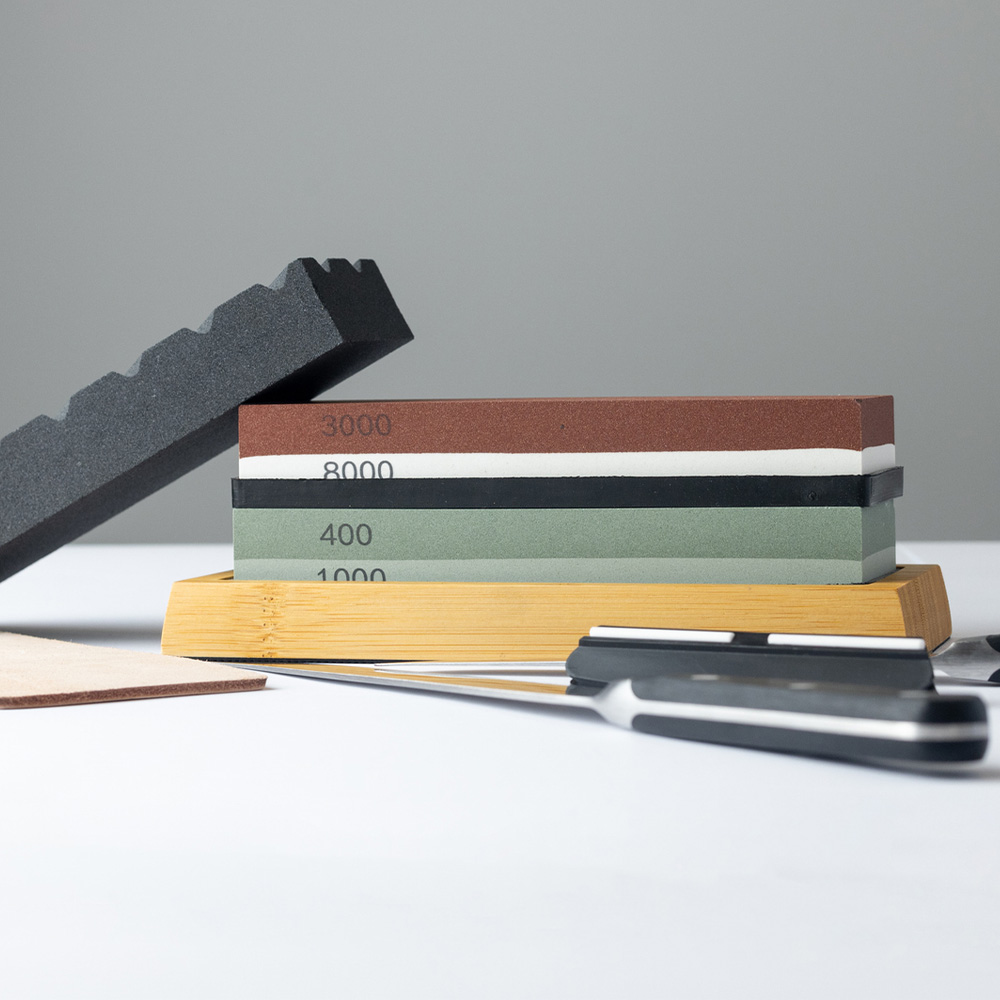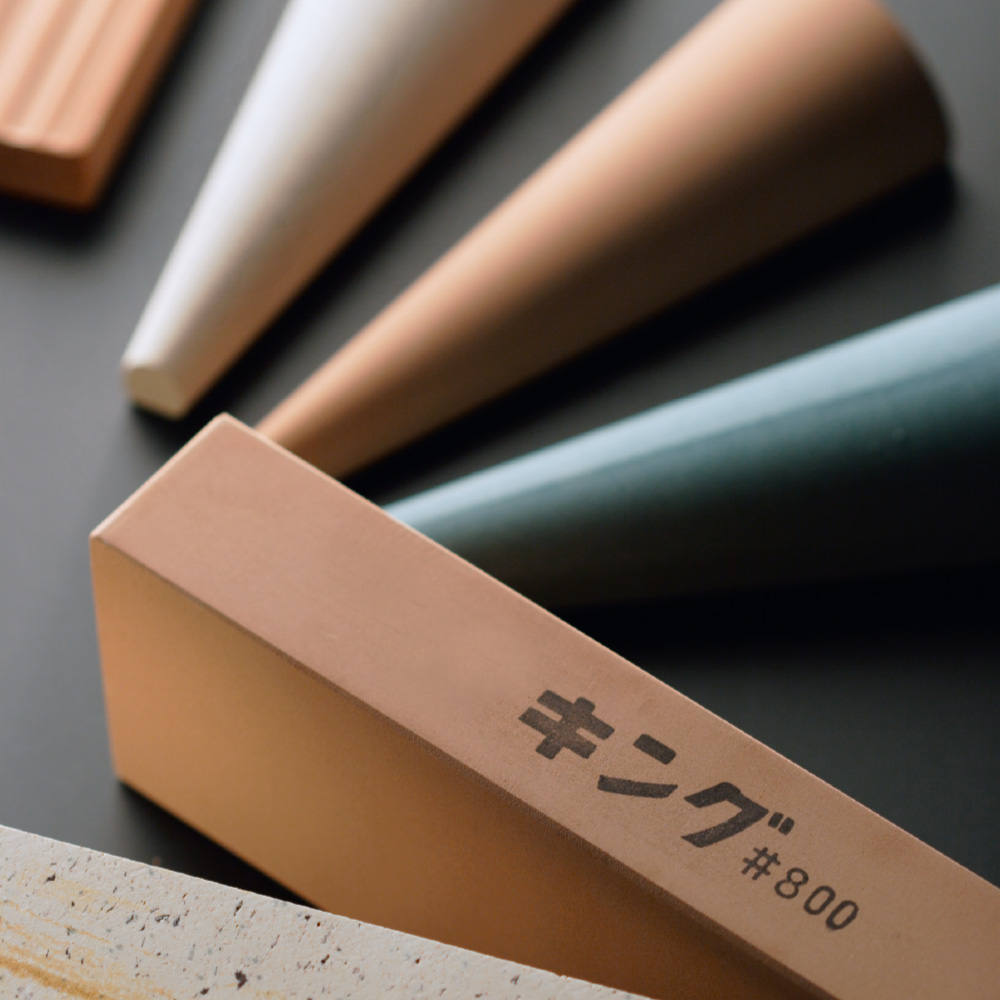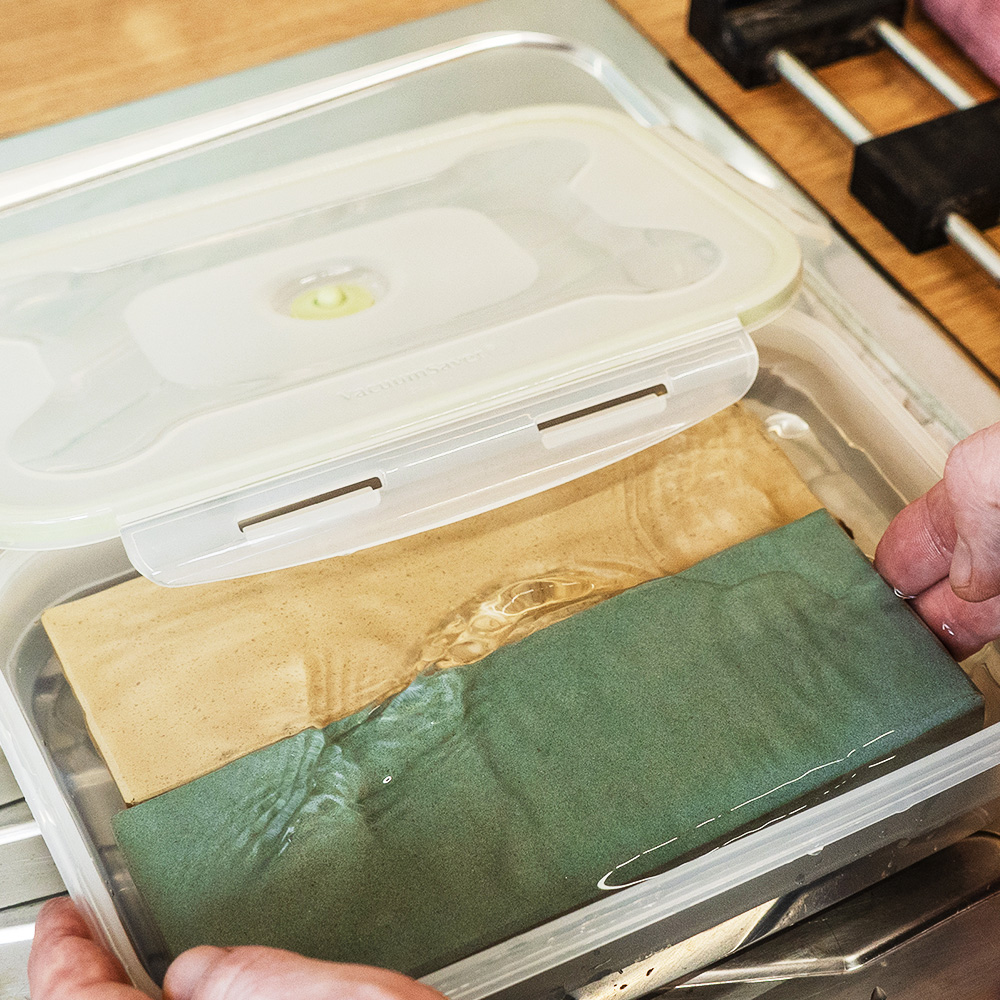

Grinding stones
- Grinding stones
- Sharpening stone sets
- Trueing blocks / trueing stones
- Sharpening stone holders / pads
- Leather strops
- Polishing pastes
- Silicon carbide powder / abrasive paper
- Customised hones
- Quick sharpeners
- Sharpening jigs
- Grinding aids
- Tool & knife sharpening systems
- Sharpening sets
- Sharpening machines
- Bench polishers
- Polishing wheels
- Rust removers / rust inhibitors
- Cutting edge inspection / sharpness tester
- Saw-set pliers & sharpening devices for saws
- Sharpening devices for drill bits
- Sharpening devices for razors
- Sharpening devices for scythes
- Sharpening devices for garden tools
Grinding stones
EXPERT KNOWLEDGE GRINDING STONES

Nothing works without sharp tools!
The best cutting tool is of little use if it is not properly sharp. Opinions on how to turn a cutting edge from blunt to sharp often differ widely, even among experts.
The art of sharpening with grinding stones has a Lengthy tradition and dates back to ancient times. In Japan, where sharpening became a highly respected craft, special sharpening techniques and corresponding grinding stones were developed to perfect the valuable hand-forged blades.
Sharpening on Japanese waterstones
This method is equally suitable for Knives; Tools; Knives and tools; and has the following advantages:
- Hardness and edge retention of the steel are not affected as no heat is generated.
- Due to the wide range of grits available, any desired fineness of cutting edge can be achieved.
- As grinding stones are rigid by nature, exact cutting edge geometries can be produced (no rounded bevelled surfaces as with felt or rubber discs).
- Garde of flying sparks.
- The basic equipment is not complex.
The achievable sharpness depends on the following factors:
- On the molecular structure of the steel, i.e. the fine grain and hardness of the blade steel: the finer/harder the steel, the sharper.
- The geometry of the cutting edge: the smaller the cutting angle, the lower the cutting resistance.
- The fine grain of the stones: the finer the grain of the grinding stones, the sharper the edge.

How are Sharpening devices differentiated?
Sharpening devices are generally divided into four groups:
- Coarseshapingstones (Grit 100-500):
Coarse shaping stone for high material removal, e.g. repairs, chipping, correcting the grinding angle. - Sharpening stone (Grit 600-3000):
Sharpening stones with medium grit for sharpening blunt cutting edges. - Honing stone (Grit 4000-6000):
Fine-grainedGrindingstonesfor honing after sharpening. - Polishing stone (Grit 8000-10 000, rarely up to 30 000):
Grindingstoneswith the finest grit for honing and polishing.
Matériau du manche distinguishing features are:
- Purity of the grain:
The more uniform (purer) the grit, the better the sanding result. Mixed grits or non-pure grits always result in reduced grinding behaviour. - For which steels:
For low-alloy carbon steels, such as Japanese chisels and plane irons, knives with centre layers of white and blue paper steel as well as axes and hatchets. For high-alloy steels, such as Western chisels and plane irons, knives with centre layers of powder metallurgical steels or Rustproof steels, e.g. VG-10 steel and sculpting irons from Pfeil. - Size of the Abrasive surface size:
The grinding surface should always be adapted to the tool to be ground. As a rule, the bigger the better. The grinding surface sizes of common grinding stones vary depending on the Model and Manufacturer. However, typical sizes range from 70 x 200 mm to 80 x 250 mm for standard grinding stones, which offer a good balance between size and handling and are suitable for most Knives; Tools; Knives and tools;. These sizes offer sufficient space for precise guidance and also allow a longer blade to be sharpened evenly.
To get started, we recommend one sharpening stone and one honing stone or a combination stone.
Types of Grinding stones
The Grinding stones on offer can be categorised as follows:
- Synthetic waterstones with a synthetic resin bond:
These popular stones have an open-pored structure with homogeneous particle embedding and surface. They grind quickly, but should be dressed regularly when worn. Stones with a synthetic resin bond must be soaked in water before use. - Synthetic water stones with a ceramic bond:
Ceramic sharpening stones with a ceramic bond remain flat for longer and can be used immediately after being wetted with water. (Splash and Go)
You can find the bond type of each stone in our shop under the measurement data/attributes.

Synthetic waterstones in the shop
- Natural stones
Japanese natural stones, as well as Belgian coticule whetstones or Slovakian Rozsutec, are sedimentary or limestone rocks with embedded corundum, oxides, quartzites or semi-precious stones (e.g. garnets). Due to their slightly inhomogeneous structure, they harmonise particularly well with hand-forged steels.

Natural waterstones in the shop
- Oilstones
Arkansas oilstones (natural stone) are very Density and wear-resistant Novakulite. Synthetic oilstones are also available. Both are soaked or rubbed with oil before sharpening. Due to their hardness, they are well suited for honing carving tools, which often have small blade cross-sections and grinding stones wear out quickly.

Oilstones in the shop
- Diamond stones
In these sharpeners, the abrasive diamond granulate is applied in a nickel matrix as a thin layer on a metal base. They guarantee fast material removal as well as high flatness and durability, provided that the diamonds are of high quality (monocrystalline).
Note:
Do not combine oil and waterstones, as oil reduces the effect of waterstones.
Avoid cheap products, which are usually produced with (short-lived) polycrystalline diamond dust.
Care/storage of resin-bonded waterstones

Some water stones must be soaked before use, e.g. King. The following care/storage is recommended to keep these stones ready for use at all times:
- For storage, it is best to use a sealable plastic tub in which the stones can be stored in a water bath at all times.
- To prevent the formation of algae, you can add a splash of vinegar or disinfectant to the storage water (harsh household cleaners can attack the bond of the stone).
- Never expose the stones to frost, risk of cracking!
- If the water has a high lime content, frequent drying out should be avoided as otherwise the stones will become clogged and lose their effectiveness.
- Treat the stones with care. Keep them flat, clean and oil-free (oil prevents water absorption and reduces the grinding effect).
Dressing the Grinding stones
Many Japanese waterstones have a rather soft, open-pored bond, which constantly releases fresh abrasive particles during sharpening and thus enables a high level of effectiveness. The resulting wear requires regular dressing of the waterstones. The stones usually need to be soaked in water before use.
Ceramic sharpening stones (splash and go), on the other hand, have a very hard bond and little wear. It needs to be dressed less often. However, in order to achieve good sharpening performance, the manufacturer must use very high-quality and wear-resistant abrasive particles. This is why such stones are usually more expensive.
In extreme cases where the bond of the abrasive particles is completely rigid and the stone is therefore virtually wear-free, diamonds are used as abrasive particles (DMT).
Dressing of water stones
For tools with a straight cutting edge, it is particularly important that the stones used are absolutely flat and at an Angle. Check the flatness of the stones using a straight edge (no. 707290) using the light splitting method. If the stone is Hollow or round, it must be levelled. There are various methods for this. The simplest method is to use a diamond dressing block (No. 705429 or No. 711613). The well-watered stone is rubbed in a circular motion on the dressing block until the surface is even. Light-coloured areas indicate areas that have already been worn down, while darker areas have not yet made contact. Continue sanding until a continuous light-coloured surface is visible and rinse off the sanding paste regularly.
Alternatively, the dressing set (no. 711115) can be used by placing 100 Grit water-based sandpaper on a flat granite stone slab. A sharpening stone dressing grid (Garde 711297) fulfils a similar function.
Dressing Oilstones
Tip:
When dressing several grinding stones with different grits, you should always work from the finest stone with the highest grit to the coarsest stone with the lowest grit. This sequence prevents any remaining abrasive particles on the dressing block from scratching the surface of a finer stone. Rinse the dressing block briefly and thoroughly under running water after each sanding process.
It is worth investing in high-quality grinding stones that are characterised by their wear resistance and durability. You are guaranteed to find the right stone to meet your individual needs and requirements from the wide range of tried-and-tested and carefully selected grinding stones at DICTUM. Quality pays off, especially when it comes to precise and sustainable sharpening of your high-quality knives and tools.






























